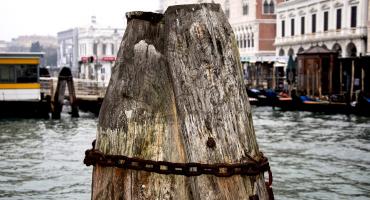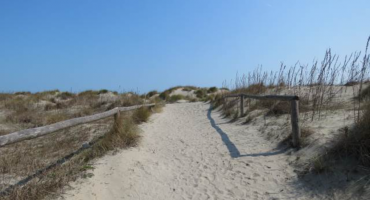The Venetian Lagoon is the largest wetland in Italy, covering 55,000 hectares, which with the lagoons of Grado and Marano, is the last reminder of the great strip of lagoon and delta that once stretched from the mouths of the Timavo to Ravenna.
It has highly original features as regards both flora and fauna, with environments forged by the action of the tides and sea currents, contrasting the action of the rivers that flowed into the sea there, but also modified by the continuous work of man who has built and dug canals, embankments and homes.
The result is an ecosystem with expanses of water with different degrees of salinity, which conditions the presence of the different animal and plant species, temporarily emerging land (salt marshes and mud flats), different microclimates. Man has been the decisive factor in the process which inverted the natural tendency of the lagoon to become silted up, using it as a natural barrier to defend himself against enemies arriving from the sea and as a source of wealth, with its harbours and its inhabited and farmed islands.
Coastal lagoons are shore children. They come into being when the sands carried to the sea by rivers, owing to currents and backwash, heap up in lines parallel to the coast, trapping portions of sea which actually become lagoons. As it happens with rivers in the plain, the natural canals in lagoons have winding, meandering courses. Straight courses and geometrical shapes always show artificial work, alien to spontaneous dynamisms and environmental balances. The rivers which flow into lagoons tend to quickly fill them with the sediments they carry; at the same time their fresh water stream, let into the lagoon, digs courses in direction of the sea, producing typical lagoon canals. The Canal Grande is nothing but an old lagoon portion of the river Brenta. Lagoon canals do not only have fluvial origins. Sea water, getting into the lagoon through the mouths during high tides, creates a current which digs wide and branched canals from the sea towards the land. This sea current flows along canals and penetrates also into very internal lagoon portions, carrying water masses which later, with the ebbing tide, follow the opposite course. The incoming and outgoing water movements grant a high turnover to wide lagoon areas.
Both fluvial and sea waters carry sediments, which tend to spread and settle onto the shallows along the canals. This way shoals come into being, which in the Venetian Lagoon are called Velme. The velme are regularly above water during low tides. When other sediments, by settling, increase their height above the average sea level, these velme get covered with some typical vegetation and turn into Barene. The typical embroidery of the lagoon shapes is the joint issue of the lines engraved by the currents and the marks drawn by the settling of sediments. The dynamic balance between erosions and natural sedimentation represents the main factor from which the look and the functionality of the lagoon surfaces derive.



